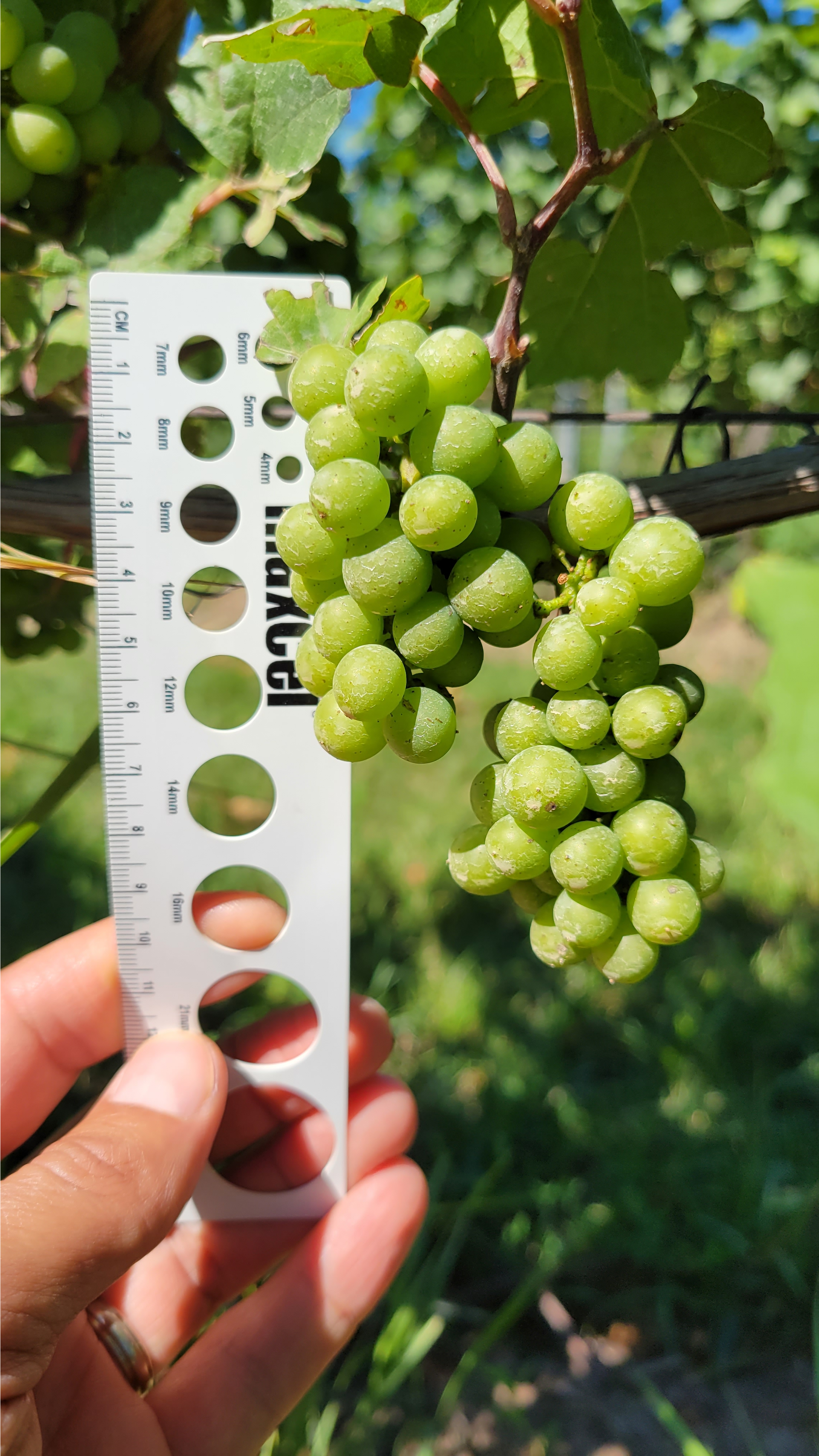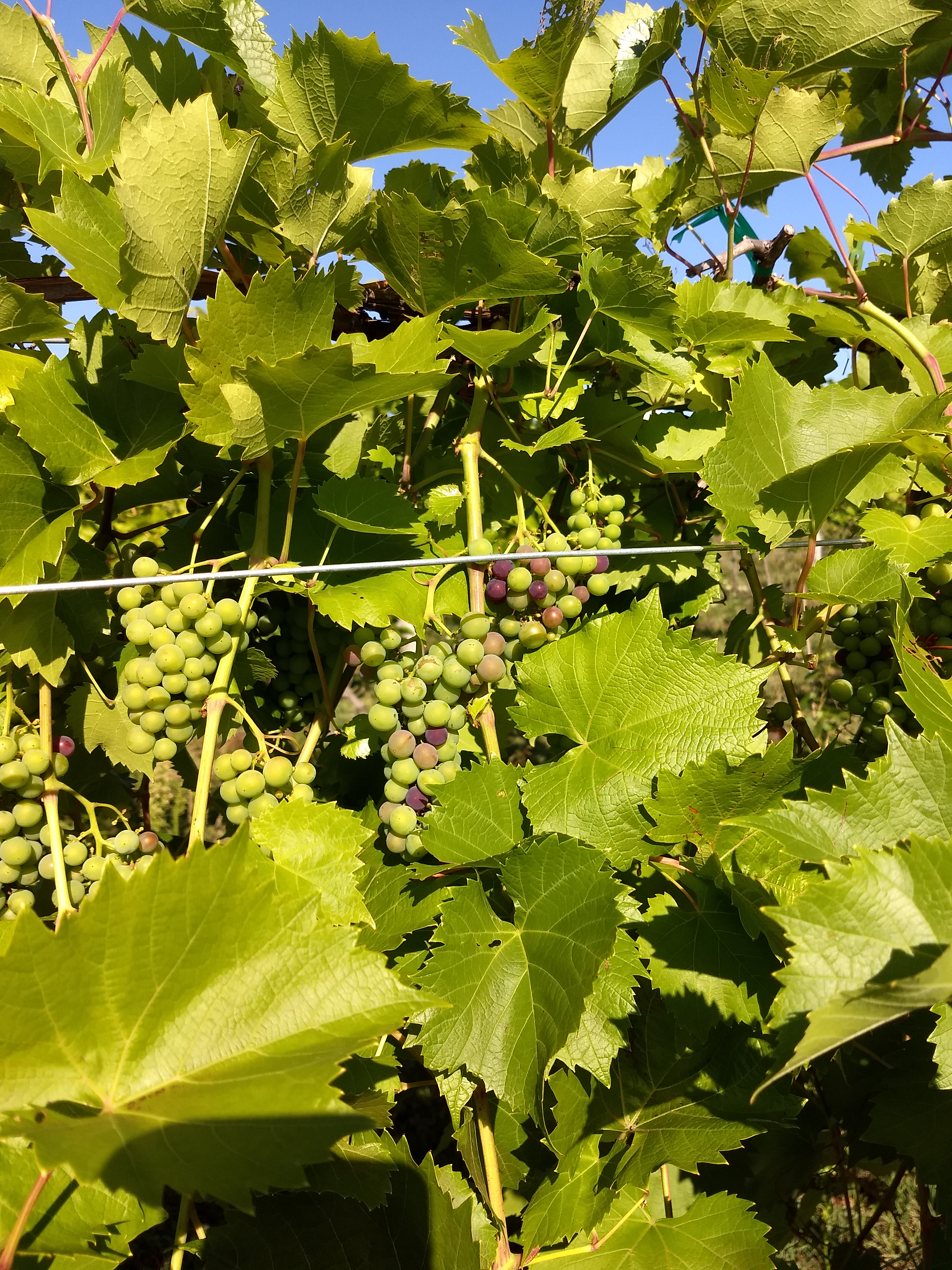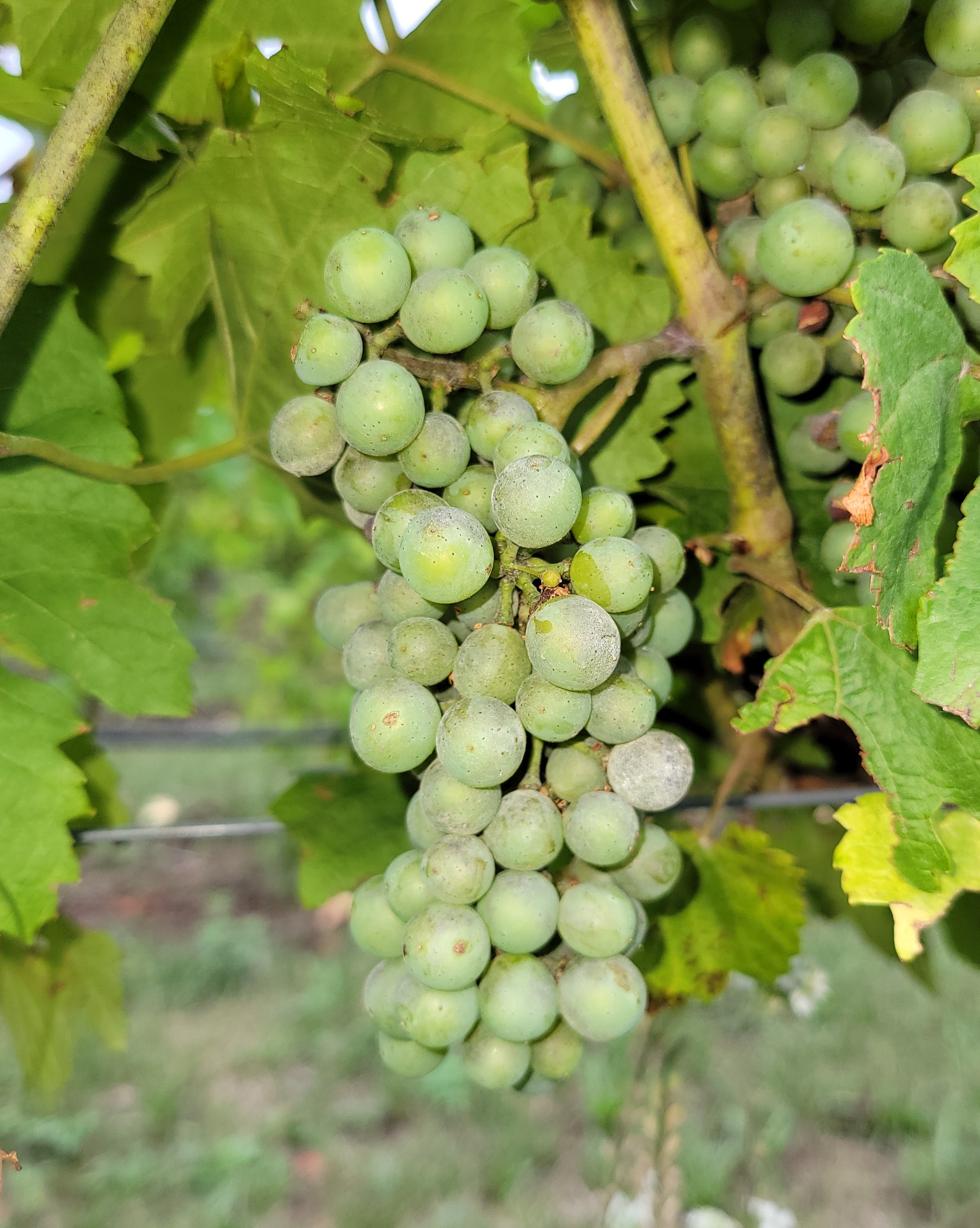Michigan grape scouting report – August 17, 2022
Veraison is around corner in northwest Michigan. Harvest is coming!

Weather
Click below for detailed seven-day forecasts for various grape production regions
Southwest
Southeast
Northwest
Last week was a pretty cool week in the entire Michigan grape-growing region. On average, Michigan picked up 322 growing degree days (GDD) at 50 F, which was 182.5 GDD less than the previous week. Again, southwest AVAs were the warmest grape-growing areas in Michigan, picking 113, or 80 GDD less than the previous week. The southeast AVAs were the second warmest regions on average and on average picked up 1 GDD more than the southwest. Last week, northwest Michigan picked up 55.5 GDD less than the previous year and picked up 150.5 GDD. The Tip of the Mitt AVAs in Michigan, as usual, was the coolest region and picked up 44 GDD more than the previous week
|
Southwest Michigan GDD Summary from March 1 through Aug 15, 2022 |
|||
|
Enviroweather station |
Current GDD 50 F |
GDD 50 F last week |
Collected the past week |
|
Benton Harbor (SWMREC) |
2114 |
2002 |
112 |
|
Fennville |
1913 |
1807 |
106 |
|
Lawton |
2085 |
1973 |
113 |
|
SW Average |
2059 |
1946 |
113 |
|
Romeo |
1965 |
1848 |
107 |
|
SE Average |
2009 |
1895 |
114 |
|
Old Mission |
1588 |
1486 |
102 |
|
Petoskey |
1540 |
1442 |
102 |
|
Traverse City (NWMHRS) |
1657 |
1553 |
104 |
|
NW Average |
1566 |
1471 |
95 |
Vine growth
In southwest Michigan, most varieties are in the middle of or have completed veraison. Harvest is beginning soon on early wine grape varieties for sparkling wine.
Veraison is very close in northern vineyards, and some early grape varieties are softening and their acid levels are dropping (Photo 2). Some locations in the Leelanau peninsula, some early varieties such as Chardonnay, show some berry softening. In the tip of the mitt, most cultivars are starting to see veraison (Photo 3).
See this chart for grape growth stages.


|
Variety |
Northwest region (Brix) |
Southwest region (Brix) |
|
Riesling |
N/A |
-- |
|
Chardonnay |
N/A |
-- |
|
Pinot noir |
N/A |
-- |
|
Pinot Blanc |
N/A |
-- |
|
Pinot Gris |
N/A |
-- |
|
Gruner Veltliner |
-- |
-- |
|
Marquette |
|
N/A |
|
Regent |
-- |
N/A |
|
Tempranillo |
-- |
N/A |
|
Concord |
-- |
7 |
|
Niagara |
-- |
8.5 |
|
Chancellor |
-- |
9.5 |
Horticulture
Hedging is beginning in vineyards in Michigan. The main objectives of hedging are to cut back on extra primary and lateral shoot growth on the top and sides of the canopy to avoid shading and shoot entanglement between vine rows to make the vineyard more accessible to workers and tractors. Hedging can further encourage growth by promoting lateral shoot growth in robust vines, even though it indirectly reduces the canopy by removing primary and lateral shoots. Hedging is best done in the early to mid summer.
Hedging is typically done between fruit set and veraison, when primary and lateral shoots begin to bend (at a 45-degree angle), and it is critical to keep leaves, fruit, and developing buds exposed to enough light in dense canopies with excessive vegetative growth. Hedging too early in the growing season should be avoided because it can lead to increased lateral growth and canopy density.
Over-cropping has been reported in some juice grape vineyards. Crop load management is critical to achieving your desired Brix level. In order to assess your crop load, use the MSU Concord model on Enviroweather and conduct a cluster thinning at 1500 GDD. For more information on this topic, see MSU’s Crop Control in Grapevines - A report from the Southwest Michigan Research and Extension Center .
Diseases
In the southwest, disease management of downy mildew, powdery mildew and botrytis fruit rot are the primary focus currently. The heavy dews we are experiencing means it is important to maintain protection against downy mildew. In the northwest, disease pressure is increasing and a high pressure of powdery mildew has been reported from Leelanau and Emmet counties (Photo 4) and black rot is becoming more apparent as well. In southwest Michigan, there is significant powdery mildew disease pressure due to the mild weather. These conditions can cause powdery mildew populations to increase rapidly as thousands of spores can be produced in a one day from a single infected leaf.

In this growing stage, you should consider choosing fungicides that control all the foliar and fruit diseases. For example with downy mildew we are most concerned with foliar infection at this time and sprays should be timed regularly throughout the season when we experience heavy dews for optimal control. Downy mildew is caused by a fungal-like organism, so many site specific systemic fungicides that target other spring diseases do not work on downy mildew. Effective fungicides for downy mildew include products in FRAC codes 4, 11, 21, 40 and 45 as well as phosphorus acid salts and some biologically-based products.
If powdery mildew is the only concern, there are a number of products that are effective (FRAC codes 3, 7, 11, 13, U8, 50, and U13 as well as sulfur). Combining fungicides from different FRAC classes should also be effective while helping with resistance management.
As we approach veraison in the southwest, it is important to consider botrytis management. Several strategies contribute to good botrytis bunch rot management including opening up the canopy, properly applying fungicides, and using resistant cultivars when possible. Good botrytis control depends on getting good coverage. Just before bunch closure is the last chance to apply a fungicide to the inner part of the developing cluster. Fungicide resistance management is also important. The most effective products for botrytis are site specific and prone to resistance development. A Michigan Grape Fact Sheet is available for managing botrytis bunch rot.
Remember as you choose a fungicide, check the guide for potential phytotoxicity of certain sprays on Concord grapes especially (this has been particularly noted for fungicides like Revus Top). Phytotoxicity risk is higher with high temperatures and quickly growing vines. Also, there is a significant phytotoxicity risk with specific contact products such as copper and sulfur for Labrusca type grapes (Concord and Niagara).
Insects
The numbers of grape berry moth infested clusters were higher this week during our scouting as the third generation of grape berry moth picks up. Growers in this region should be planning their cover sprays for the third generation since egg hatch was predicted to start on Aug. 7 in the Lawton area. This late August protection of the clusters should prepare growers for the harvest season with vineyards that can have a lower risk of damage in the pre-harvest window. Always be aware of the predicted rain showers over the coming week and avoid application just before rain.
After the 2021 experience, we are carefully watching vineyards with weekly scouting and growers should be doing the same to make sure that cluster rots and vinegar flies do not develop to be too much of a challenge. Monitoring traps for spotted wing Drosophila have been added to vineyards in the southwest and we will report those trap catches in the coming weeks. We are already primed for seeing some late-season grape berry moth pressure in southwest Michigan given the early start to the third generation, and the long-lead weather forecast also calls for warm evenings. Continue to monitor this as we approach harvest and be prepared to control rots and their vinegar fly vectors with treatments once the berries reach 14 Brix. An extension article next week will review our recent results on this topic and recommendations for the post-veraison part of the season.
Upcoming events
Register for Dirt to Glass 2022: Elevating Michigan Wine from the Ground Up. Michigan State University Extension is hosting a new conference for the Michigan grape and wine industry. Dirt to Glass 2022: Elevating Michigan Wine from the Ground Up is the first ever of its kind in Michigan and this year it will take place in Traverse City on August 25-26. This year's Dirt to Glass conference will focus on soil health, soil identification and soil fertility. Each year, the conference chooses a specific area of study based on the results of an annual educational needs assessment survey.
Tile Drainage Field Day 2022. Linking Soil Health, Nutrient Management, and Water Management for Improved Water Quality. The event will be hold on Thursday, Aug. 25, 2022 at 13000 Bird Lake Rd., Camden, MI 49232
Related articles
- 2022 Fruit insecticide registration update
- Southwest Michigan fruit update – June 28, 2022
- Michigan grape scouting report – June 22, 2022
- 2022 MSU Fruit Pest Management Guide (E-154)
- Grape growth stages
- A Mobile Guide for Grape IPM Scouting in North Central and Eastern U.S.
- Using the MSU Enviroweather grape berry moth model in 2018
This work is supported by the Crop Protection and Pest Management Program [grant no 2021-70006-35450] from the USDA National Institute of Food and Agriculture.



 Print
Print Email
Email
